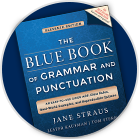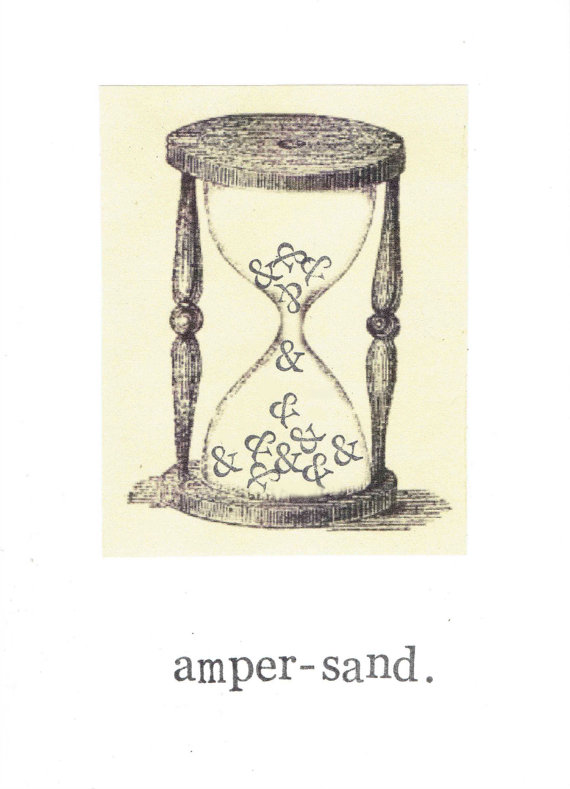|
& What About the Ampersand?
|
|
The ampersand (&): We see it often in our daily communication, which
adheres to a modern ethos of speed and brevity as seen in letters, emails,
texts, tweets, memos, and notes. The mark is appealing because it helps
save character space, it fits right in with other letters’ heights,
and many could argue it’s one of English’s better-looking
symbols.
With so much presence of the ampersand in contemporary communication, the
question now concerns where it fits in formal writing. For writers who want
to exchange the mark’s typical blue jeans for dress pants,
we’ll explore some guidelines for proper attire.
First, let’s review how the mark & came to be according
to Merriam-Webster online and Fowler’s Modern English Usage.
In the late Middle Ages, single letters used as words, such as A
or I, were spelled by the phrase “(letter) per se
(word),” meaning “(letter) by itself is the word (word).”
For the letter/word I, for example, the phrase was I per se I, which means “I by itself is
the word I.”
Merriam-Webster and Fowler’s further agree that over time
the ampersand symbol evolved into a stylized version of the Latin et, which means “and.” The spelling phrase thus became
“& per se and” (“& by itself is the word and”). When said aloud, the phrase was pronounced “and
per se and,” which spoken English eventually morphed into
“ampersand.”
Merriam-Webster cites 1795 as the year of the ampersand mark’s first
known use in its current form. Varying references estimate ampersand was added to English dictionaries in the mid-1800s.
So how are careful, formal writers applying the mark today? The Associated Press Stylebook advises using the ampersand when it
is part of a company’s formal name or composition title (e.g., Barnes
& Noble, AT&T, Ben & Jerry’s); otherwise, the ampersand
should not replace the word and, except in widely accepted
abbreviations such as B&B (bed and breakfast) and R&B (rhythm and blues).
The Chicago Manual of Style
concurs with the AP on that point. It also allows that “either and or & may be used in a publisher’s name,
regardless of how it is rendered on the title page, provided the
conjunction is treated consistently throughout a bibliography: Harper and
Row or Harper & Row.” For titles of works, CMOS
makes room for editorial discretion in allowing & to be
changed to and.
Beyond the guidance offered by those two leading style sources, ampersand
usage can range across people and channels. For example, in his January
2015 online article “Ampersand Usage—‘&’ or
‘And,’ ” business writer David Speaker identifies the
ampersand as acceptable:
• inside graphic or document tables or within parentheses when space is limited
• in common shorthand expressions such as “rock &
roll”
• within a series to identify an item as part of its name and not a
separator (e.g., “rock, pop, rhythm & blues, and hip-hop”)
• in identifying more than one addressee, particularly a couple:
“Mr. & Mrs. Johnson.”
As with any grammatical item with guidelines that have been stretched over
time, the best bet is to choose your stylebook and consistently follow what
it recommends. If you ever find yourself uncertain, simply remember the
more sparing you are with ampersands in formal writing, the better.
|
|
View this article on our website
|
|
Free BONUS Quiz for You!
[[firstname]], because you are a subscriber to the newsletter, you get access to one of the Subscribers-Only Quizzes. Click here to take a Periods, Question Marks, and Parentheses Quiz and get your scores and explanations instantly!
We will be adding many more quizzes this year to our already substantial list of quizzes. If you have suggestions for topics we have not yet covered, please send us a message at help@grammarbook.com.
|
Hundreds of Additional Quizzes
at Your Fingertips
Subscribe now to receive hundreds of additional English usage quizzes not found anywhere else!
For Instructors and Employers, you may assign quizzes to your students and employees and have their scores tallied and organized automatically! Let GrammarBook.com take the hassle out of teaching English!
"Fun to test my Skills"
"The explanations really help ... thanks!"
"I download the quizzes for my students who don't have computer access."
|

|
Don't need all the quizzes?
You can now purchase the same quizzes individually for ONLY 99¢ each.
Purchase yours here.
|
If you think you have found an error in a quiz, please email us at help@grammarbook.com
|
 |
The Blue Book of Grammar and Punctuation
by Jane Straus, Lester Kaufman, and Tom Stern |
The Authority on English Grammar! Eleventh Edition Now Available
An indispensable tool for busy professionals, teachers, students, homeschool families, editors, writers, and proofreaders.
Available in print AND as an e-Book! Over 2,000 copies are purchased every month!
The publisher of The Blue Book, Jossey-Bass, A Wiley brand, is offering a 35 percent discount for those of you who order the book through Wiley.com. Shipping and tax are not included. Simply go to bit.ly/1996hkA and use discount code E9X4A.
Offer expires December 31, 2018.
|
Wordplay

|
 |
English In A Snap:
68 One-Minute English Usage Videos FREE |
Learn all about who and whom, affect and effect, subjects and verbs, adjectives and adverbs, commas, semicolons, quotation marks, and much more by just sitting back and enjoying these easy-to-follow lessons. Tell your colleagues (and boss), children, teachers, and friends. Click here to watch.
|
|





